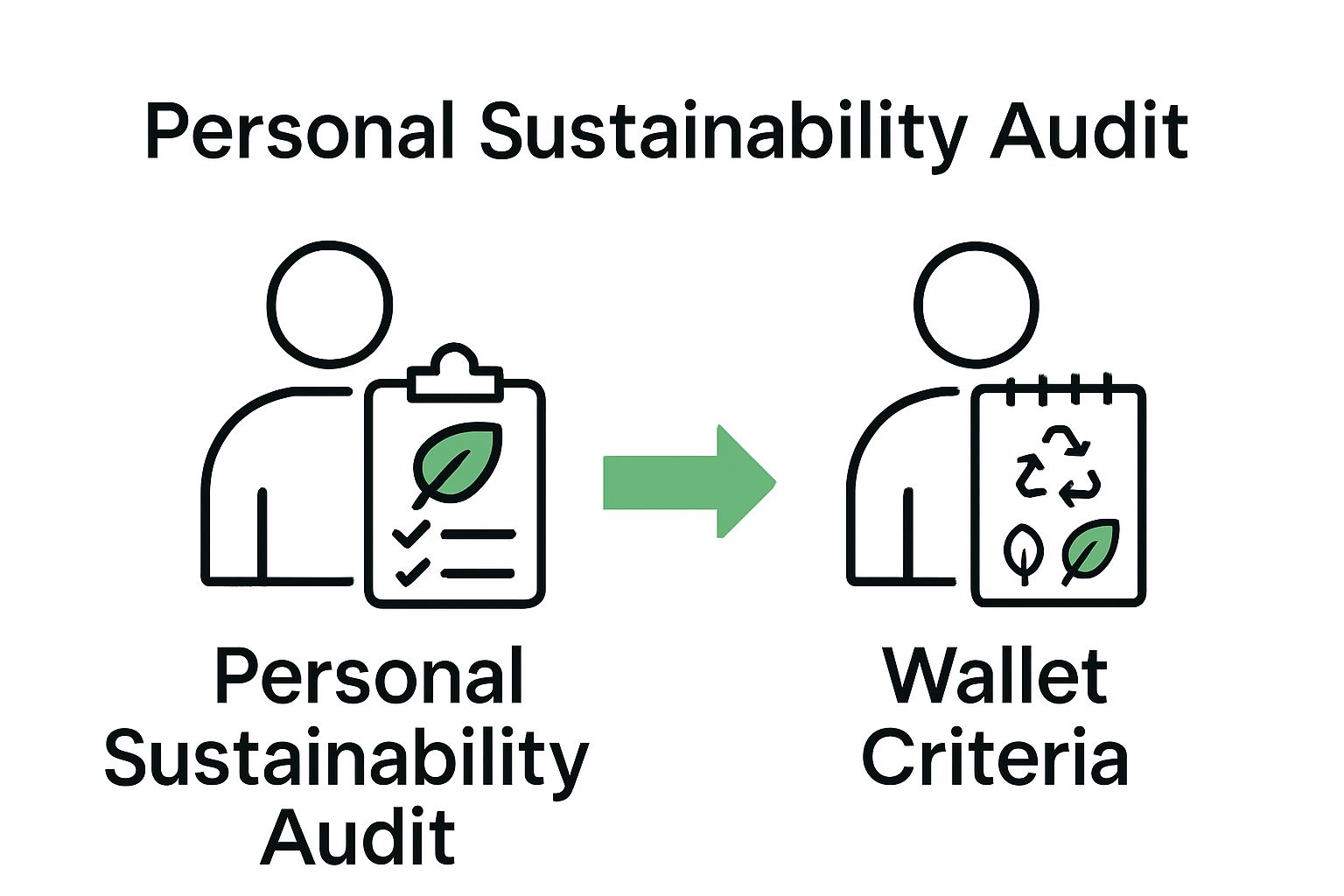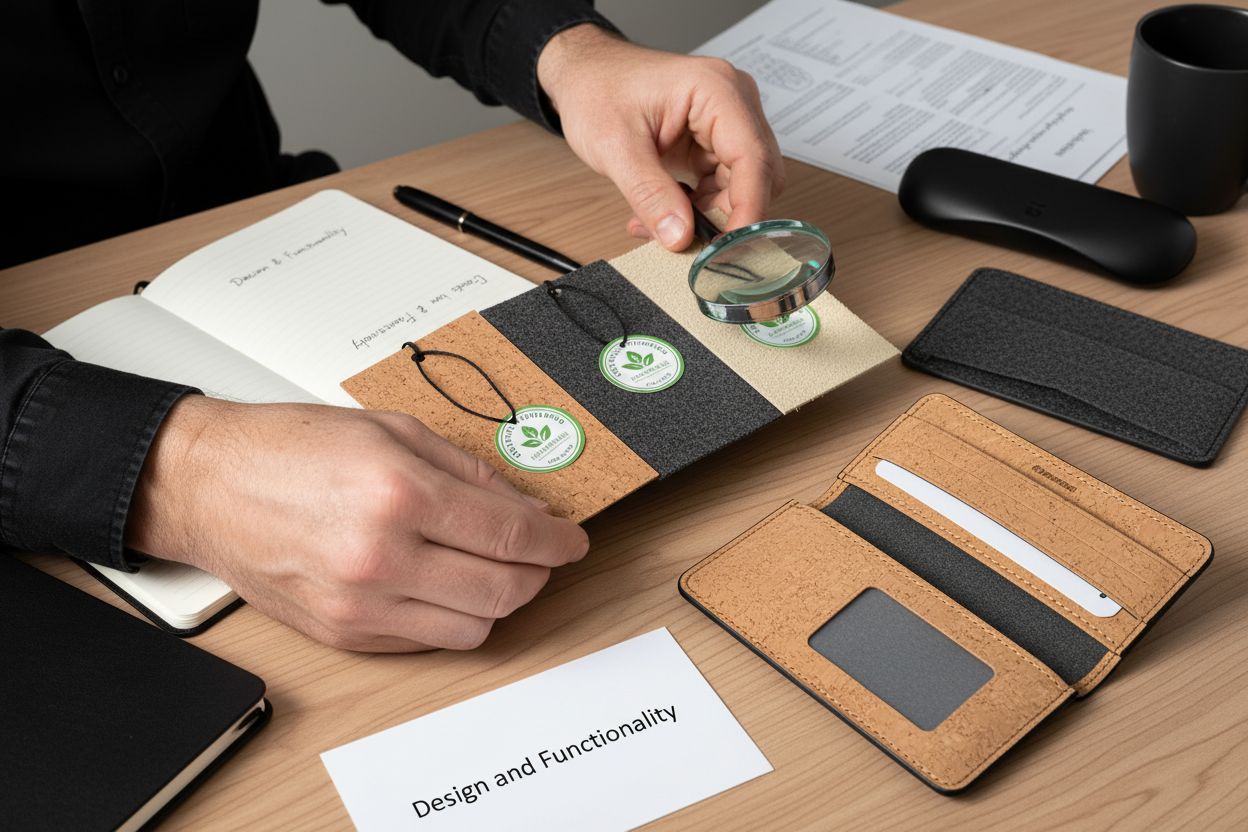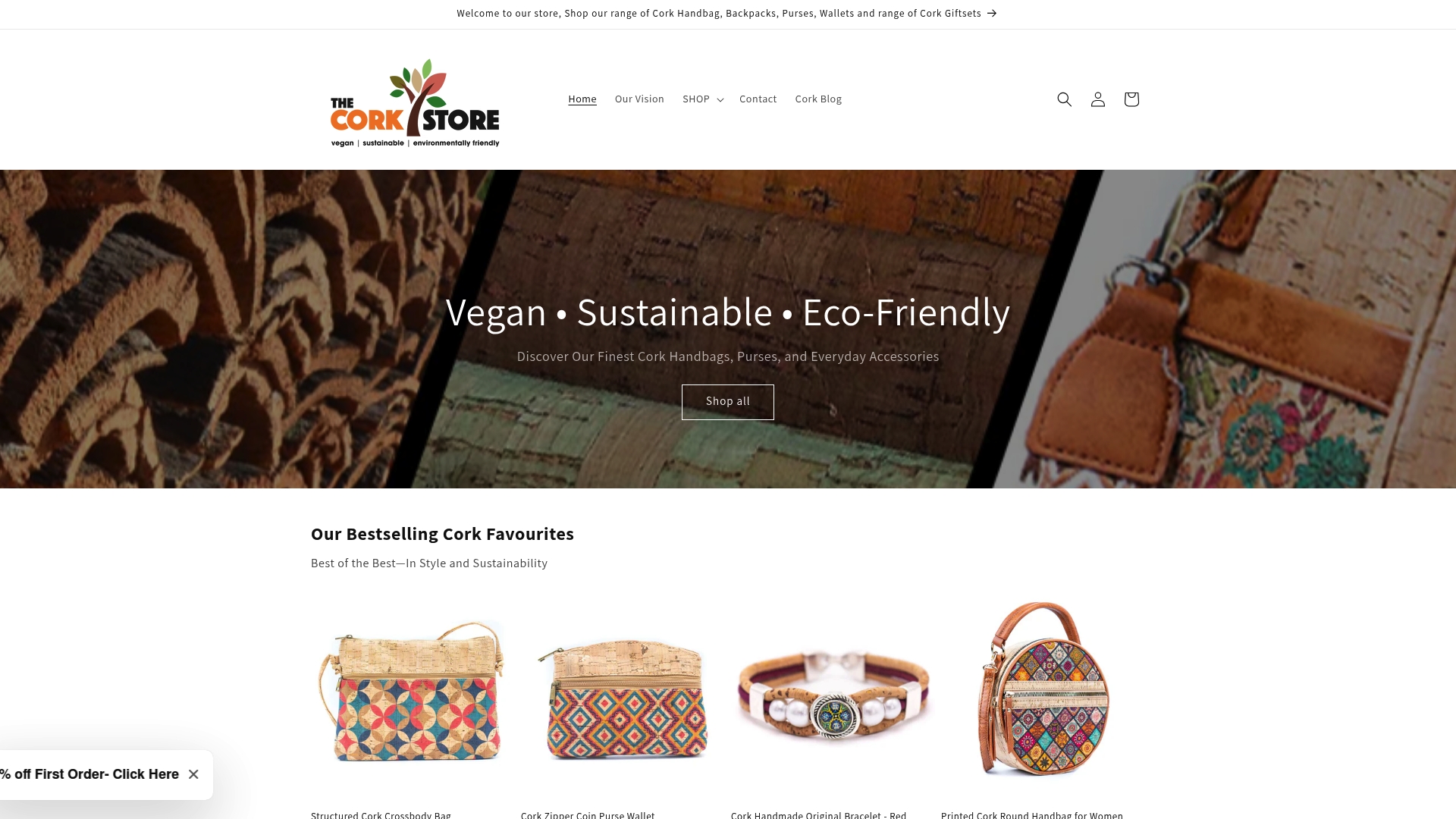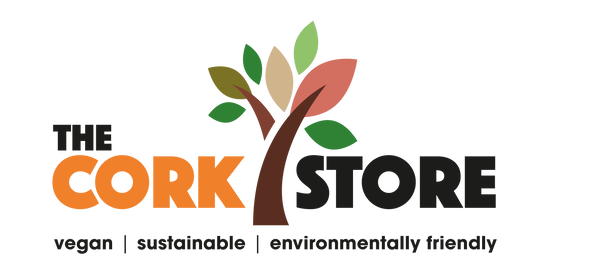
Choosing Eco Friendly Wallets: A Step-by-Step Guide
Share
Choosing an eco friendly wallet sounds straightforward. Environmental impact is no small matter, and wallets made from materials like cork and recycled plastics are gaining attention. But here is the surprise. No wallet can meet every single sustainability standard at once, according to experts. That means finding the right wallet is less about chasing the perfect product and more about matching your own values to practical choices.
Table of Contents
- Step 1: Identify Your Eco-Friendly Criteria
- Step 2: Research Sustainable Materials
- Step 3: Compare Brands And Ethical Practices
- Step 4: Evaluate Design And Functionality
- Step 5: Verify Customer Reviews And Ratings
Quick Summary
| Key Point | Explanation |
|---|---|
| 1. Define your sustainability criteria | Identify personal eco-friendly values such as carbon emissions, materials, and ethical practices to guide your wallet selection. |
| 2. Research sustainable materials | Investigate materials like cork and recycled plastics, focusing on their lifecycle and environmental impact for informed choices. |
| 3. Assess brand transparency and ethics | Compare brands based on their manufacturing practices, worker treatment, and sustainability commitments to ensure genuine eco-friendliness. |
| 4. Evaluate design and functionality | Prioritise functionality suited to your needs, ensuring the wallet supports both sustainability and daily utility without compromise. |
| 5. Review customer experiences | Examine detailed reviews to understand real-world performance and longevity of wallets, differentiating between marketing claims and actual quality. |
Step 1: Identify Your Eco-Friendly Criteria
Choosing eco friendly wallets requires a deliberate and thoughtful approach to understanding your personal sustainability priorities. The initial step involves identifying precisely what “eco friendly” means to you, recognising that this concept extends far beyond a simple purchasing decision.
Personal sustainability values vary significantly between individuals. For some, environmental impact means reducing carbon emissions during production, while others prioritise materials that are biodegradable or sourced through ethical manufacturing processes. You might care deeply about animal welfare, seeking wallets that completely avoid leather and animal products. Alternatively, your focus could be on supporting small manufacturers who use renewable resources and minimise waste.
To effectively identify your eco friendly wallet criteria, begin by conducting a personal sustainability audit. Reflect on what environmental principles matter most to you. Consider questions such as: Are you more concerned about reducing plastic usage? Do you want materials that can be easily recycled? Are you interested in products made from regenerative materials like cork, which represents sustainable fashion alternatives?
Your criteria might also include practical considerations beyond pure environmental metrics. Think about durability, which indirectly supports sustainability by reducing frequent replacements. A wallet crafted from high quality, long lasting materials ultimately creates less waste than cheaper, disposable alternatives. You might prioritise locally produced accessories to minimise transportation emissions, or seek brands demonstrating transparent supply chains and fair labour practices.
To streamline your selection process, create a personal checklist of non negotiable eco friendly wallet requirements. Your list might include criteria like:
- Completely animal product free
- Manufactured using renewable resources
- Produced by companies with verified ethical labour practices
- Biodegradable or easily recyclable materials
- Minimal packaging waste
Remember that no single wallet will perfectly satisfy every sustainability criterion. The goal is finding a product that aligns with your most important environmental values while meeting your practical accessory needs. By clearly defining your expectations upfront, you transform choosing an eco friendly wallet from an overwhelming task into a purposeful, values driven decision.
The table below helps you organise and clarify your personal eco-friendly wallet criteria, summarising common values and requirements referenced throughout the guide for use as a practical checklist.
| Sustainability Value | Example Requirement | Why It Matters |
|---|---|---|
| Animal Welfare | Completely animal product free | Supports cruelty-free, vegan choices |
| Renewable Resources | Manufactured using renewable materials | Reduces resource depletion |
| Ethical Labour Practices | Produced by verified ethical companies | Ensures fair and humane workplace standards |
| End-of-Life Considerations | Biodegradable or easily recyclable materials | Minimises waste, supports circular economy |
| Local Production | Locally produced accessories | Lowers transportation emissions |
| Durability | High quality, long-lasting construction | Reduces replacements and overall footprint |
| Minimal Packaging | Minimal, recyclable packaging | Cuts unnecessary waste |

Successful completion of this step means having a clear, personalised understanding of what makes a wallet “eco friendly” in your perspective. You should feel confident about the specific environmental and ethical standards you want your future wallet to meet.
Step 2: Research Sustainable Materials
After defining your personal eco friendly wallet criteria, the next crucial step involves researching sustainable materials that align with your environmental values. This stage transforms abstract principles into concrete material choices that genuinely support ecological responsibility.
Sustainable materials represent far more than trendy buzzwords. They embody a comprehensive approach to reducing environmental impact through thoughtful resource selection. Cork, recycled plastics, organic cotton, and plant based leather alternatives emerge as frontrunners in eco conscious wallet manufacturing. Each material carries unique environmental credentials and performance characteristics that demand careful evaluation.
Exploring various sustainable materials requires a multi dimensional investigation. Begin by understanding the lifecycle of potential wallet materials. For instance, cork represents an extraordinary sustainable option because it can be harvested without destroying the tree, regenerates quickly, and absorbs significant carbon dioxide during growth. Recycled materials like PET plastics transform waste into functional accessories, while innovative plant based leathers crafted from pineapple leaves or apple waste demonstrate remarkable ecological ingenuity.
Your research should extend beyond basic material composition. Investigate the manufacturing processes, transportation emissions, and overall environmental footprint associated with each material.
Below is a comparison table outlining key sustainable wallet materials mentioned in this guide, highlighting their eco credentials and notable attributes for buyer consideration.
| Material | Eco Credentials | Key Attributes |
|---|---|---|
| Cork | Renewable, harvested without tree destruction | Lightweight, water resistant, absorbs carbon |
| Recycled PET Plastics | Diverts plastic waste, lowers resource use | Durable, utilises recycled content |
| Organic Cotton | Grown without harmful chemicals | Biodegradable, softer material option |
| Plant-Based Leather | Made from pineapple leaves, apple waste, etc. | Innovative, animal-free, biodegradable options |
| Recycled Polyester | Utilises pre/post-consumer waste | Resilient, supports circular economy |
To conduct comprehensive material research, leverage multiple information sources:
- Academic environmental journals
- Sustainable fashion blogs
- Manufacturer sustainability reports
- Independent environmental certification organisations
- Expert interviews and documentaries
Pay particular attention to third party certifications that validate ecological claims. Labels like Global Organic Textile Standard (GOTS), Cradle to Cradle, and Forest Stewardship Council (FSC) provide robust indicators of genuine sustainability. These certifications ensure that materials meet rigorous environmental and social responsibility standards.
Successful completion of this research stage means developing a nuanced understanding of sustainable wallet materials. You should be able to distinguish between genuine ecological innovations and superficial greenwashing tactics. Your material knowledge will empower you to make an informed, principled wallet selection that genuinely reflects your environmental commitment.
Step 3: Compare Brands and Ethical Practices
Comparing brands and their ethical practices transforms your eco friendly wallet search from theoretical research into practical decision making. This critical step requires a comprehensive evaluation that goes beyond surface level marketing claims and delves into the genuine sustainability commitments of potential manufacturers.
Transparency becomes your most powerful tool when assessing brand practices. Reputable companies will openly share detailed information about their supply chains, manufacturing processes, worker conditions, and environmental impact. Look for brands that provide comprehensive sustainability reports, clearly outline their carbon reduction strategies, and demonstrate measurable commitments to social responsibility.
Understanding sustainable fashion essentials involves examining multiple dimensions of a brand’s ethical framework. Consider not just the materials used, but also how workers are treated, whether fair wage practices are implemented, and the overall carbon footprint of production. Some brands go beyond basic compliance, actively investing in community development, worker education, and regenerative environmental practices.
According to Fashion Revolution’s transparency research, brands that disclose detailed information about their supply chain are significantly more likely to maintain genuine ethical standards. This means investigating beyond glossy marketing materials and seeking out third party certifications, independent audits, and verifiable sustainability metrics.
Your comparative analysis should encompass several key evaluation criteria:
- Carbon emission reduction strategies
- Worker compensation and working conditions
- Use of renewable or recycled materials
- Waste management and circular economy practices
- Long term environmental commitment
Digital research tools become invaluable in this comparison process. Leverage sustainability databases, ethical fashion platforms, and consumer review sites that specialise in evaluating brand practices. Cross reference information from multiple sources to build a comprehensive understanding of each brand’s genuine environmental commitment.
Pay special attention to small, innovative brands that might not have massive marketing budgets but demonstrate exceptional commitment to sustainability. These emerging designers often lead the way in ecological innovation, developing creative solutions that challenge traditional manufacturing paradigms.
Successful completion of this step means developing a nuanced, evidence based perspective on potential wallet brands. You should feel confident in your ability to distinguish between genuine sustainability efforts and superficial greenwashing tactics. Your research will have transformed you from a passive consumer into an informed, principled purchaser capable of making meaningful ecological choices.
Step 4: Evaluate Design and Functionality
Design and functionality represent the critical intersection where sustainability meets practical utility in eco friendly wallets. This step transforms your environmental principles into a tangible accessory that not only supports ecological values but also seamlessly integrates into your daily life.
Functionality trumps aesthetic trends when selecting an eco friendly wallet. Consider your specific lifestyle requirements. A minimalist professional might require a sleek design with card slots and minimal bulk, while a traveller needs additional security features and space for multiple currencies. Your wallet should be an extension of your personal organisational style, not a compromise between sustainability and practicality.
Materials play a significant role in determining both design and durability. Cork, recycled polyester, and plant based leather alternatives offer remarkable versatility, allowing manufacturers to create wallets that are simultaneously lightweight, water resistant, and structurally robust. These innovative materials challenge traditional assumptions about sustainable accessories, proving that ecological choices need not mean sacrificing quality or aesthetic appeal.
Evaluate design elements through a holistic lens that considers multiple performance factors:
- Interior organisation capabilities
- External wear and tear resistance
- Weight and portability
- Ease of cleaning and maintenance
- Potential for long term use
Pay particular attention to construction quality and design innovation. Examine stitching techniques, edge finishing, and overall material integrity. A well designed eco friendly wallet should demonstrate meticulous craftsmanship that suggests longevity. Reinforced seams, strategic material layering, and intelligent compartment design transform a simple accessory into a reliable daily companion.
Digital tools can enhance your design evaluation process. Many brands now offer virtual product tours, detailed material specification sheets, and customer review platforms that provide nuanced insights into real world performance. Leverage these resources to conduct a comprehensive assessment beyond manufacturer marketing claims.
Understanding sustainable fashion essentials means recognising that true design excellence balances aesthetic appeal with functional integrity. Your ideal wallet should not only reflect your environmental values but also simplify your daily interactions, reducing friction and enhancing personal organisation.

Successful completion of this step means developing a crystal clear vision of the precise wallet design that meets both your ecological principles and practical needs. You will have transformed abstract sustainability concepts into a tangible, functional accessory that seamlessly integrates style, utility, and environmental responsibility.
Step 5: Verify Customer Reviews and Ratings
Customer reviews and ratings represent the most authentic window into a wallet’s real world performance, offering unfiltered insights that transcend manufacturer marketing claims. This critical step transforms theoretical research into practical understanding through collective consumer experiences.
Comprehensive review analysis goes far beyond simply checking star ratings. Dive deep into detailed written reviews, paying close attention to long term usage experiences, durability reports, and specific observations about material quality. Consumers who have used the wallet for months or years provide the most valuable perspectives on how sustainable materials actually perform under daily stress.
When examining reviews, develop a strategic approach that looks beyond surface level commentary. Look for reviews that discuss specific performance metrics such as material resilience, wear patterns, colour retention, and practical functionality. Pay particular attention to reviews from individuals with lifestyles similar to your own, as their experiences will most closely mirror your potential wallet usage.
Review verification requires multiple information sources:
- Official brand website reviews
- Independent e commerce platforms
- Sustainability focused consumer forums
- Social media product discussion groups
- Specialised sustainable fashion review websites
Understanding sustainable fashion essentials means recognising that authentic consumer feedback provides nuanced insights manufacturers might overlook. Look for recurring themes in reviews that indicate consistent product strengths or potential weaknesses. Multiple independent reviewers mentioning similar experiences offer more reliable information than isolated comments.
Digital tools can enhance your review research process. Utilise review aggregation platforms that compile feedback from multiple sources, providing a more comprehensive perspective. Some advanced review analysis tools can even generate sentiment reports, helping you quickly understand overall consumer satisfaction.
Be particularly attentive to reviews discussing long term sustainability performance. Comments about how well the wallet ages, its ability to withstand daily use, and the material’s resistance to environmental factors provide crucial information about the product’s genuine ecological credentials.
Successful completion of this step means developing a robust, multi dimensional understanding of potential wallet options through authentic consumer experiences. You will have transformed abstract product descriptions into tangible, real world insights, enabling a more informed and confident purchasing decision that aligns with your sustainability principles.
Find Your Perfect Eco-Friendly Wallet at The Cork Store
You have spent time learning how to define your personal eco-criteria, explore sustainable materials, and sift through real customer feedback. But it can feel overwhelming to turn those values into action, especially when you care deeply about animal welfare, low carbon materials, and responsible sourcing. Are you struggling to find a wallet that truly ticks every sustainability box without compromise on style or durability?

At The Cork Store, you will discover a curated collection of vegan, cruelty-free wallets made from high-quality cork — a material celebrated in our guide for its renewability and minimal environmental impact. Our wallet range is thoughtfully designed to meet strict ethical standards featured in your personal checklist, from animal product free materials to responsible craftsmanship. Experience what genuine sustainability looks and feels like in your daily life. Ready to take the next step towards sustainable fashion? Explore our latest eco-friendly wallets and accessories or learn more about the unique benefits of cork in our cork blog. Make the sustainable switch today, while our exclusive collection is available and your favourite design is in stock.
Frequently Asked Questions
How do I define my eco friendly wallet criteria?
To define your eco friendly wallet criteria, reflect on your personal sustainability values, such as the importance of materials, ethical manufacturing practices, and waste reduction. Conduct a personal sustainability audit by listing non-negotiable requirements, such as wanting animal product-free options or minimal packaging waste.
What sustainable materials should I consider for eco friendly wallets?
Consider sustainable materials like cork, recycled plastics, and organic cotton when choosing an eco friendly wallet. Research each material’s lifecycle and manufacturing processes to ensure they align with your environmental values and provide durability for long-term use.
How can I compare brands for their ethical practices?
To compare brands, seek out transparency in their practices, such as detailed sustainability reports and information on sourcing and worker conditions. Create a checklist of evaluation criteria like carbon emission strategies and worker welfare to facilitate meaningful comparisons.
What design and functionality factors should I evaluate?
Evaluate design and functionality by assessing how well the wallet meets your lifestyle needs, including organisational features and longevity. Focus on practical aspects like material resilience and ease of maintenance to find a wallet that balances sustainability with daily utility.
How do I verify customer reviews and ratings effectively?
Verify customer reviews by analysing detailed written feedback, focusing on long-term use and material performance. Look for patterns in recurring comments that highlight strengths or weaknesses, as this will provide a more reliable understanding of how a wallet performs in real-world conditions.
